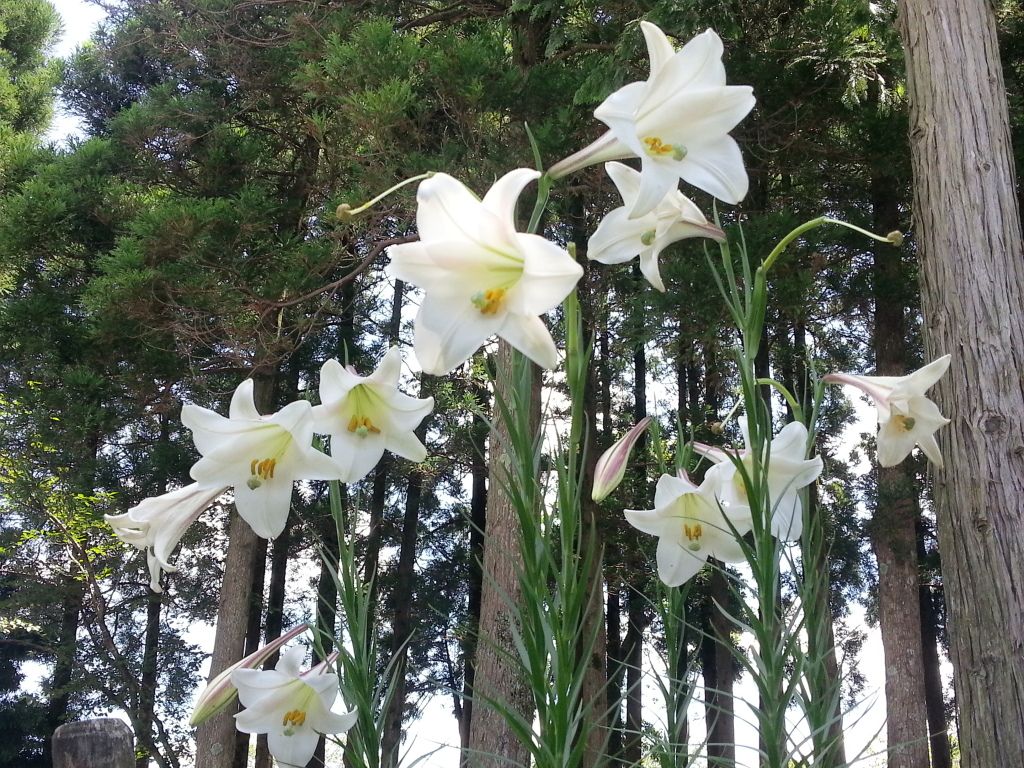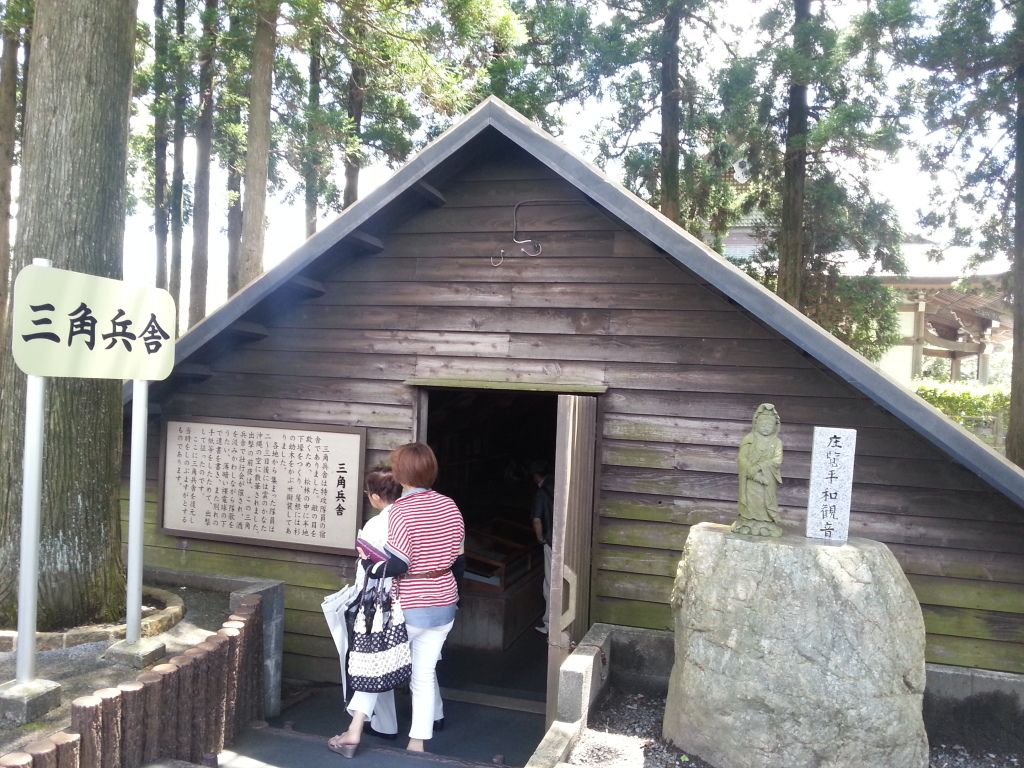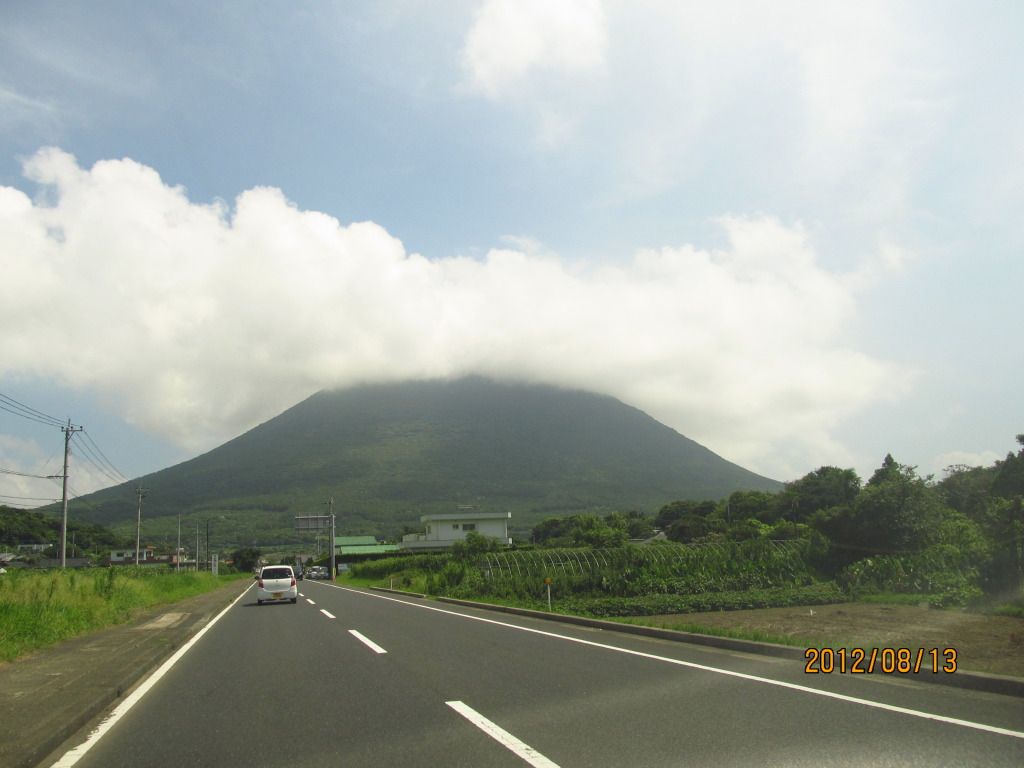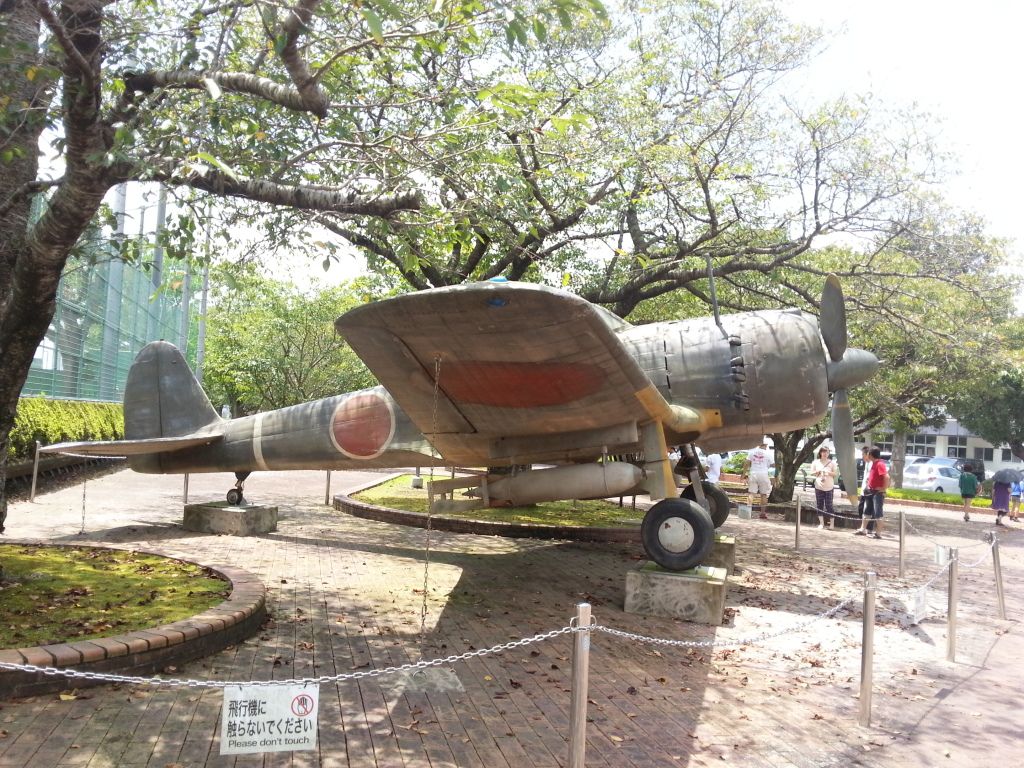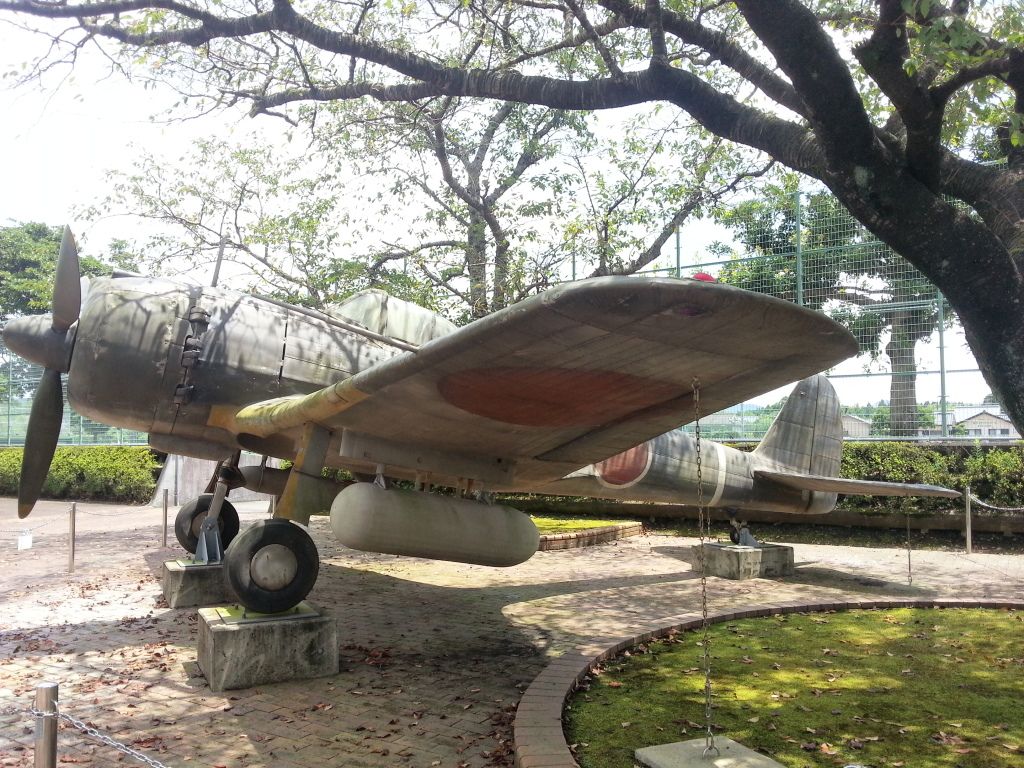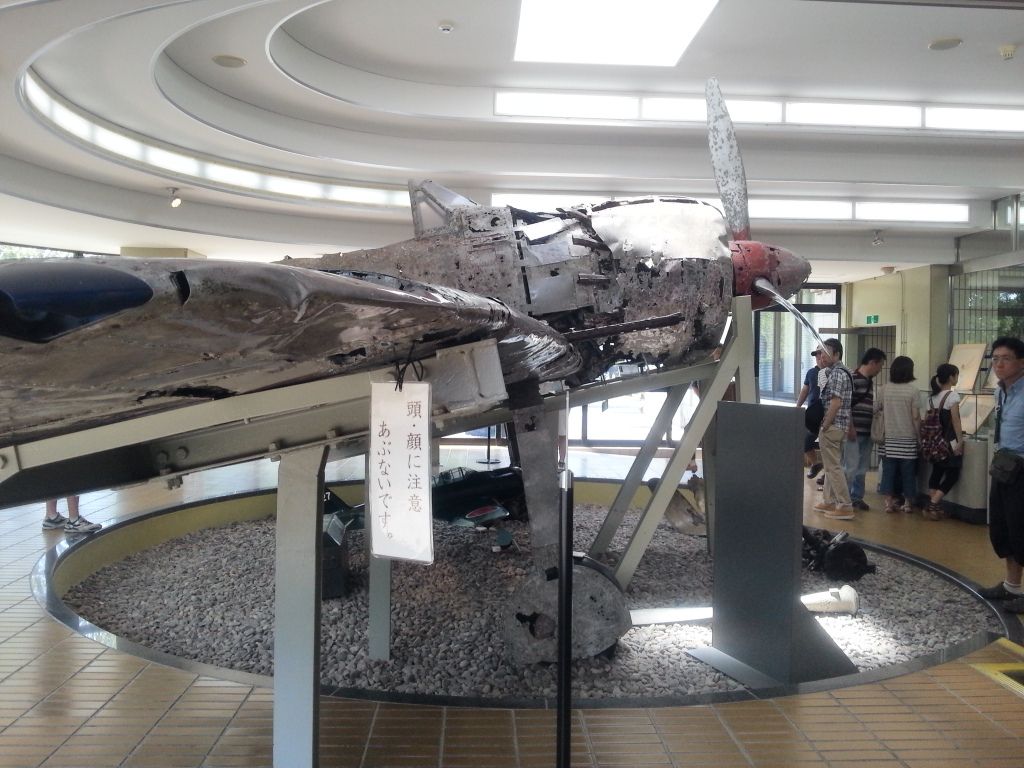Kinwashi Tour Japan Thread
-

Hana no toki wa kanashimi no toki: Chiran tokkou obasan Torihama Tome monogatari (Flower season, a sad season: Story of Tome Torihama, aunt of Chiran's kamikaze pilots)
by Masako Aihoshi
Takisyobou, 1992, 210 pagesTome Torihama operated a small restaurant near Chiran Air Base in southern Kagoshima Prefecture, and many pilots from the base frequented her restaurant. She became like a second mother to many young pilots, and after the war she frequently told stories about kamikaze pilots she had met. Hana no toki wa kanashimi no toki (Flower season, a sad season) tells the story of Tome Torihama's life in 15 chapters. Chapters 6 to 8, which cover the spring of 1945, mention several kamikaze pilots who sortied from Chiran. However, lack of details about individual pilots greatly lessens the emotional impact of these stories. The other chapters contain some interesting tidbits about Tome's life before and after World War II, but most of these stories also lack depth.
The principal source for this book comes from interviews of Tome Torihama during the last three years of her life between 1989 and 1992, when she was living at a retirement home. The author Masako Aihoshi interviewed several other people, including Reiko Akabane (maiden name of Torihama), Tome's younger daughter who met many kamikaze pilots, and Yoshikiyo Torihama, Tome's grandson who took over from Tome the operation of Tomiya Ryokan in Chiran. The extensive quotations from these interviews, most in difficult-to-read Kagoshima dialect, tend to interrupt rather than enhance the flow of the book's narrative. Aihoshi states in the first chapter that in this book she wanted to include stories about kamikaze pilots that Tome Torihama had not yet told the world. However, Hana no toki wa kanashimi no toki (Flower season, a sad season) contains very few details about Chiran's kamikaze pilots other than those published in other books.
The most interesting stories and photos in this book deal with Tome's personal life before and after World War II. Tome worked as a babysitter and maid prior to her marriage to Yoshitoshi Torihama and then as a peddler who walked between several small towns in southern Kagoshima Prefecture including Chiran during the early years of her marriage. In 1929 at the age of 27, Tome opened Tomiya Restaurant when she and her husband moved to Chiran. Tachiarai Army Flight School opened a branch school in Chiran in December 1941, and Tome became like a mother to many students who frequently visited her restaurant. When she had to stay in a hospital in the nearby town of Kaseda (now known as Minamisatsuma City) for several weeks due to complications after an appendix operation, pilots from Chiran not only sent her flowers and get-well letters but also often flew their planes low over the hospital as a gesture to show they wanted her to recover soon.
After the end of the war, Tome Torihama built a small monument out of sticks in remembrance of the kamikaze pilots who sortied from Chiran. In the beginning Tome walked to the former airfield where the monument was located about once a week in order to pray for the departed pilots, and she steadily increased the frequency until she went every other day. She continually campaigned to town officials, local businessmen, and townspeople for the erection of a Kannon (Buddhist goddess of mercy) statue in remembrance of the kamikaze pilots who died, and this dream finally was realized in 1955. Tome also performed tax collection work after war's end, and the book contains an interesting 1963 photo of Tome and 36 men who received a certificate of commendation from the Director of the Regional Taxation Bureau. The latter part of the book deals with Tome's move into a retirement home.
Although this book covers many episodes from Tome Torihama's life, the author does not effectively connect events and provide sufficient personal details to transform them into a compelling narrative. Other books with stories about Tome Torihama more successfully present her close personal relationship with many kamikaze pilots. These books include Hotaru kaeru (The firefly returns) by Akabane and Ishii and Sora no kanata ni (To distant skies) by Asahi Shimbun Seibu Honsha.
Hana no toki wa kanashimi no toki: Chiran tokkou obasan Torihama Tome monogatari (Flower season, a sad season: Story of Tome Torihama, aunt of Chiran's kamikaze pilots)
by Masako Aihoshi
Takisyobou, 1992, 210 pagesTome Torihama operated a small restaurant near Chiran Air Base in southern Kagoshima Prefecture, and many pilots from the base frequented her restaurant. She became like a second mother to many young pilots, and after the war she frequently told stories about kamikaze pilots she had met. Hana no toki wa kanashimi no toki (Flower season, a sad season) tells the story of Tome Torihama's life in 15 chapters. Chapters 6 to 8, which cover the spring of 1945, mention several kamikaze pilots who sortied from Chiran. However, lack of details about individual pilots greatly lessens the emotional impact of these stories. The other chapters contain some interesting tidbits about Tome's life before and after World War II, but most of these stories also lack depth.
The principal source for this book comes from interviews of Tome Torihama during the last three years of her life between 1989 and 1992, when she was living at a retirement home. The author Masako Aihoshi interviewed several other people, including Reiko Akabane (maiden name of Torihama), Tome's younger daughter who met many kamikaze pilots, and Yoshikiyo Torihama, Tome's grandson who took over from Tome the operation of Tomiya Ryokan in Chiran. The extensive quotations from these interviews, most in difficult-to-read Kagoshima dialect, tend to interrupt rather than enhance the flow of the book's narrative. Aihoshi states in the first chapter that in this book she wanted to include stories about kamikaze pilots that Tome Torihama had not yet told the world. However, Hana no toki wa kanashimi no toki (Flower season, a sad season) contains very few details about Chiran's kamikaze pilots other than those published in other books.
The most interesting stories and photos in this book deal with Tome's personal life before and after World War II. Tome worked as a babysitter and maid prior to her marriage to Yoshitoshi Torihama and then as a peddler who walked between several small towns in southern Kagoshima Prefecture including Chiran during the early years of her marriage. In 1929 at the age of 27, Tome opened Tomiya Restaurant when she and her husband moved to Chiran. Tachiarai Army Flight School opened a branch school in Chiran in December 1941, and Tome became like a mother to many students who frequently visited her restaurant. When she had to stay in a hospital in the nearby town of Kaseda (now known as Minamisatsuma City) for several weeks due to complications after an appendix operation, pilots from Chiran not only sent her flowers and get-well letters but also often flew their planes low over the hospital as a gesture to show they wanted her to recover soon.
After the end of the war, Tome Torihama built a small monument out of sticks in remembrance of the kamikaze pilots who sortied from Chiran. In the beginning Tome walked to the former airfield where the monument was located about once a week in order to pray for the departed pilots, and she steadily increased the frequency until she went every other day. She continually campaigned to town officials, local businessmen, and townspeople for the erection of a Kannon (Buddhist goddess of mercy) statue in remembrance of the kamikaze pilots who died, and this dream finally was realized in 1955. Tome also performed tax collection work after war's end, and the book contains an interesting 1963 photo of Tome and 36 men who received a certificate of commendation from the Director of the Regional Taxation Bureau. The latter part of the book deals with Tome's move into a retirement home.
Although this book covers many episodes from Tome Torihama's life, the author does not effectively connect events and provide sufficient personal details to transform them into a compelling narrative. Other books with stories about Tome Torihama more successfully present her close personal relationship with many kamikaze pilots. These books include Hotaru kaeru (The firefly returns) by Akabane and Ishii and Sora no kanata ni (To distant skies) by Asahi
-


-

-
-
-
-
-
Why there is a mountain, behind the Kamikaze planes. Always.
the answer...
Stayed tune for more Kamikaze.

-
-
-
-
Cafeteria Tomiya and Chiran Peace Museum are not in the same area.
Now we cross over there and see more info of Kamikaze pilots.
Edited by kinwashi 05 Nov `12, 9:53PM -
English version for those who don't understand Japanese.
Here.
Click.
Edited by kinwashi 05 Nov `12, 9:56PM -
Edited by kinwashi 05 Nov `12, 10:01PM
-
source
-
Chiran (知覧町) Kagoshima Prefecture Japan Location
Located on Kyushu Island in Kagoshima Prefecture.Mount Kaimondake
Kaimondake is significant in Kamikaze history as the pilots circled this mountain as a final farewell to Japan as they headed for Okinawa. -
nOw this is what i know, i saw,
when heading my convoy at the highway.
took this pictures along the way.
-
nOw this is what i know, i saw,
when heading my convoy at the highway.
took this pictures along the way.
-
-
THE MOVIE.
VIDEO.
The Movie "Hotaru" Kamikaze Pilots from Chiran 知覧特攻平和会館
-
The Last Letter of 18 year old Kamikaze, Human Torpedo Kaiten
In Japanese.
-
If this thread is not running till today.
How you know ?
Kamikaze Song.
For Kamikaze.
-
Now you know.
Kagoshima come to Chiran and witness the history.
Chiran
(Sep 7th 2002)Chiran, the town of kamikazes. It is the place where I always wanted to visit, and I finally got the chance to visit there in 2002. Since Chiran is the town of kamikazes, I could talk with the old people who still remember the time when the war was still going on. I was given a lot of materials, and also I myself took several poor pictures. I would like to organize them step by step.
â—�Chiran-cho (cho means town in Japanese)
Chiran-cho is located in southern Satsuma Peninsula in Kagoshima Prefecture. Chiran-cho borders on Makurazaki-shi in the west, and on Shijuku-shi in the east. The population of the town is approximately 14,000, and major industry of the town is agriculture. Specially, Chirancha(Chiran tea) is well known in Japan, and it has been awarded many times.   Because in Chiran-cho, many residents of samurais of Edo Period (1603-1868) is still conserved, it is called “Little Kyoto of Satsuma,” and many of tourists visit there every year.
As I wrote in the chapter, “Story About Torihama Tome-san” on this homepage, Chiran used be a forefront base of the Imperial Army Aerial Special Attack Missions. Also a movie Hotaru (The Fire Fly) (2001, summer) was shot in Chiran.
In Chiran, Chiran Special Attack Peace Hall was built on the site of Chiran Air Base, with effort of people in the town, war bereaved and survivors of Special Attack Force.
It is the place where I would like you to visit, and I introduce briefly about the place.

â—�Ishidourou (Stone Lanterns)
From Satsunan Industrial High School of the center of Chiran to Peace Park (Heiwa Kouen), there is a line of stone lanterns. Visitors to Chiran always see the lanterns and wonder at the presence of them. Those lanterns are built with donations from all over Japan and according to the plan, there would be total of 1,036 lanterns in future. The number 1,036 is the number of the spirits of kamikaze pilots, mostly Army soldiers who made sorties from Chiran and died in Okinawa.â—�Special Attack Peace Hall (Tokkou Heiwa Kaikan)
It is thought that present peaceful and prosper Japan was built by the sublime sacrifices of kamikaze pilots. For that reason, Special Attack Peace Hall was built in Chiran to thank and console the spirit of the pilots who died in Southern Pacific and to pray for eternal peace.
With the cooperation of war bereaved and the persons concerned, many valuable belongings and materials of the kamikaze pilots. Those are all very important to pass down the stories of great achievements of the kamikaze heroes to future generations.
 A road lined with cherry trees to Special Attack Peace HallChiran Special Attack Peace Hall
A road lined with cherry trees to Special Attack Peace HallChiran Special Attack Peace Hall Chiran Special Attack Peace Park
Chiran Special Attack Peace Park

"Tokoshieni"(Forever)
"Yasurakani"(Peacefully)
To make access to Chiran, Airport Express Bus from Kagoshima Airport is the most popular way to get there. With express bus, it takes 40 minutes to Kagoshima city and 75 minutes to Chiran. I used a rent-a-car from the airport and it took me about an hour to get to Chiran.
Bibliography: Chiran Tokkou Heiwa Kaikan Chiran-cho Chiran Chiran-cho, Kagoshima Prefecture
The map used in the article is provided from Chiran-cho Town Hall
Translated by Mr.Ishiguro
-
Now you know.
Kagoshima come to Chiran and witness the history.
Chiran
(Sep 7th 2002)Chiran, the town of kamikazes. It is the place where I always wanted to visit, and I finally got the chance to visit there in 2002. Since Chiran is the town of kamikazes, I could talk with the old people who still remember the time when the war was still going on. I was given a lot of materials, and also I myself took several poor pictures. I would like to organize them step by step.
â—�Chiran-cho (cho means town in Japanese)
Chiran-cho is located in southern Satsuma Peninsula in Kagoshima Prefecture. Chiran-cho borders on Makurazaki-shi in the west, and on Shijuku-shi in the east. The population of the town is approximately 14,000, and major industry of the town is agriculture. Specially, Chirancha(Chiran tea) is well known in Japan, and it has been awarded many times.   Because in Chiran-cho, many residents of samurais of Edo Period (1603-1868) is still conserved, it is called “Little Kyoto of Satsuma,” and many of tourists visit there every year.
As I wrote in the chapter, “Story About Torihama Tome-san” on this homepage, Chiran used be a forefront base of the Imperial Army Aerial Special Attack Missions. Also a movie Hotaru (The Fire Fly) (2001, summer) was shot in Chiran.
In Chiran, Chiran Special Attack Peace Hall was built on the site of Chiran Air Base, with effort of people in the town, war bereaved and survivors of Special Attack Force.
It is the place where I would like you to visit, and I introduce briefly about the place.

â—�Ishidourou (Stone Lanterns)
From Satsunan Industrial High School of the center of Chiran to Peace Park (Heiwa Kouen), there is a line of stone lanterns. Visitors to Chiran always see the lanterns and wonder at the presence of them. Those lanterns are built with donations from all over Japan and according to the plan, there would be total of 1,036 lanterns in future. The number 1,036 is the number of the spirits of kamikaze pilots, mostly Army soldiers who made sorties from Chiran and died in Okinawa.â—�Special Attack Peace Hall (Tokkou Heiwa Kaikan)
It is thought that present peaceful and prosper Japan was built by the sublime sacrifices of kamikaze pilots. For that reason, Special Attack Peace Hall was built in Chiran to thank and console the spirit of the pilots who died in Southern Pacific and to pray for eternal peace.
With the cooperation of war bereaved and the persons concerned, many valuable belongings and materials of the kamikaze pilots. Those are all very important to pass down the stories of great achievements of the kamikaze heroes to future generations.
 A road lined with cherry trees to Special Attack Peace HallChiran Special Attack Peace Hall
A road lined with cherry trees to Special Attack Peace HallChiran Special Attack Peace Hall Chiran Special Attack Peace Park
Chiran Special Attack Peace Park

"Tokoshieni"(Forever)
"Yasurakani"(Peacefully)
To make access to Chiran, Airport Express Bus from Kagoshima Airport is the most popular way to get there. With express bus, it takes 40 minutes to Kagoshima city and 75 minutes to Chiran. I used a rent-a-car from the airport and it took me about an hour to get to Chiran.
Bibliography: Chiran Tokkou Heiwa Kaikan Chiran-cho Chiran Chiran-cho, Kagoshima Prefecture
The map used in the article is provided from Chiran-cho Town Hall
Translated by Mr.Ishiguro
-
http://www.kamikazeimages.net/index.htm


American View
Bunker Hill After
Kamikaze AttackKamikaze Images
American and Japanese images of kamikaze pilots differ greatly. This web site explores diverse portrayals and perceptions of the young men who carried out suicide attacks near the end of World War II.
When Japanese kamikaze pilots carried out their attacks between October 1944 and August 1945, Japanese and American people had opposite perspectives. Japanese people saw young smiling pilots as they waved goodbye. In contrast, American soldiers viewed death and destruction when the pilots' planes exploded upon crashing into their ships. These very different points of view continue to influence Japanese and American perceptions of kamikaze pilots even until today.
The first major section of this web site analyzes American and Japanese views of kamikaze pilots in two separate essays. Each essay's first part analyzes the principal images or perceptions that people currently have about kamikaze pilots. The second part explores the most important sources of these images.
The page on American Views argues that most Americans perceive kamikaze pilots as faceless, lacking individual personalities. Lack of knowledge about kamikaze pilots has caused many Americans to speculate about their motivations, so many believe they were fanatical, suicidal, or forced to make attacks. Many people know little or nothing about the history of Japan's kamikaze corps, but they form their images of the pilots based on the Anglicized word "kamikaze," which has come to signify anyone having reckless disregard for personal welfare. Current terrorist suicide bombings have provoked comparisons to attacks made by Japan's kamikaze.
The essay on Japanese Views shows that Japanese people today consider kamikaze pilots in a manner completely contrary to American views. Japanese believe that the brave young pilots suffered tragic deaths in defense of their homeland. The letters, poems, and diaries written by kamikaze pilots have had significant influence on Japanese people's views. The Chiran Peace Museum for Kamikaze Pilots, which opened in 1975, has contributed to Japanese people viewing the pilots as individuals who suffered tragic deaths. Also, two recent popular movies, Hotaru (Firefly) and Gekkou no Natsu (Summer of the Moonlight Sonata), have strongly influenced current Japanese perceptions about kamikaze pilots.

Japanese View
Five Kamikaze Pilots
With Puppy
The second major section includes reviews of various forms used to create kamikaze images, including Books, Films, Museums, Monuments, Internet, Writings, and Other Forms. Web pages in this section include evaluations of works of popular culture, such as comic books, television programs, fiction, animation, and children's books. This section also contains several other analytical essays covering topics such as personal narratives,Japanese films, and documentaries.
This web site covers all of Japan's special attack forces, which carried out suicide attacks not only with planes but also with torpedoes (kaiten), rocket-propelled gliders (ohka), explosive motorboats, and midget submarines. The stories on this site focus on personal rather than military aspects of Japan's kamikaze operations. The site also includes many translations of Japanese material.
You can find information in several ways. The expanding menu system at left shows most pages on the site, and the Site Map lists all pages with links. You can also use the search box at the top right to locate specific information on the site.
I first became interested in Japan's kamikaze in April 2000 when I visited the museum at Yasukuni Jinja, located in Tokyo near the Imperial Palace. At that time the museum had a special exhibit of last letters written by kamikaze pilots. The letters contained a variety of sentiments, including resolve, patriotism, and love for family. Surprising to me, they did not reflect fear or bitterness. After reading these moving letters, I realized that Japanese views of kamikaze pilots differed immensely from opinions held by Americans.
I consider this web site to be a collaborative effort of many people. If you have any questions or comments, please feel free to contact me in either English or Japanese. If you have material, photos, information, or opinions you would like to add to this web site, please contact me.
Bill Gordon - Homepage
45 Midway Drive, Cromwell, CT 06416
e-mail address: [email protected]








